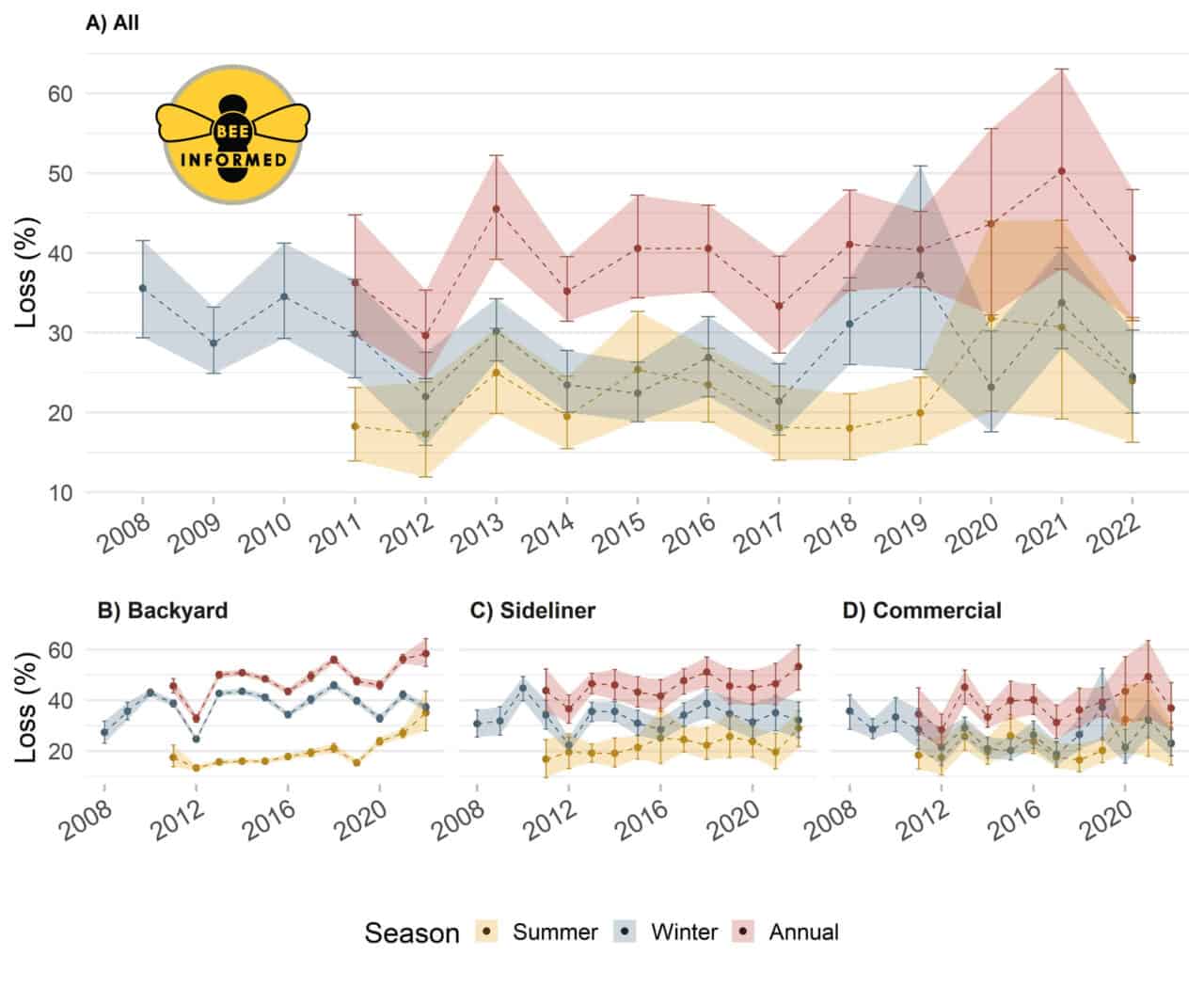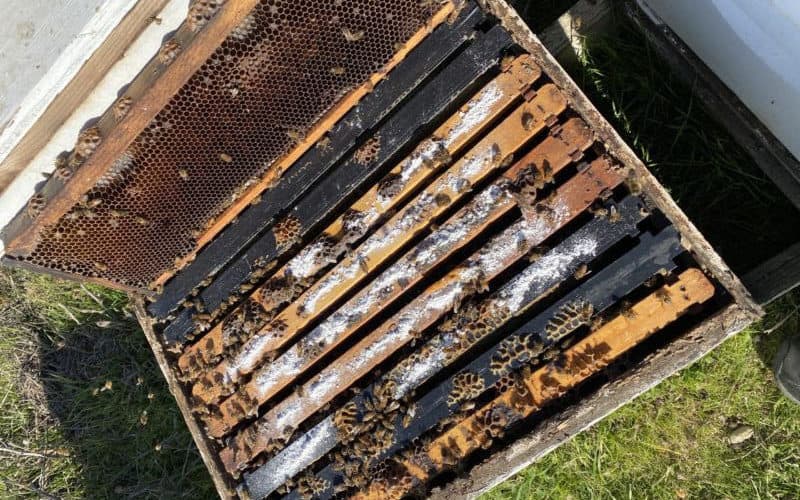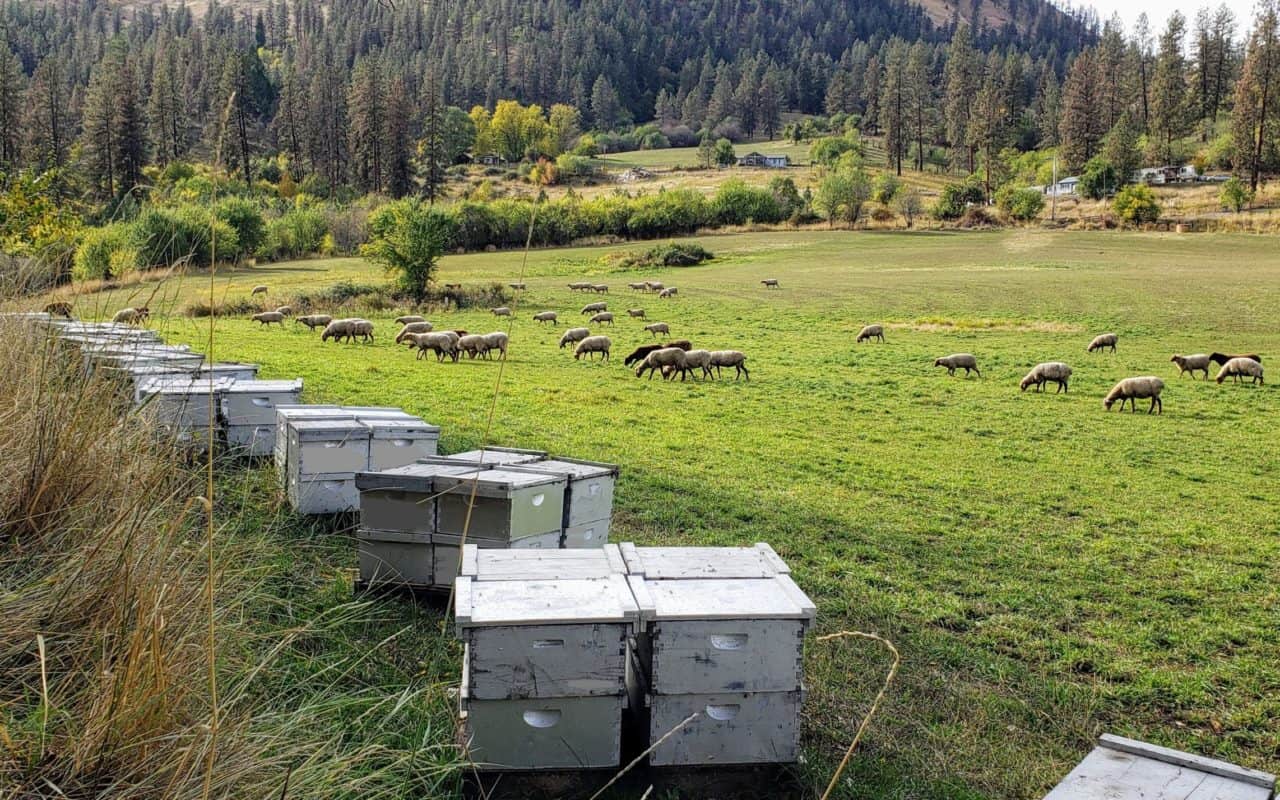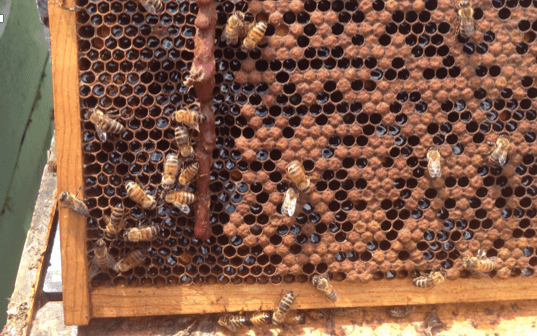Note: This is a preliminary analysis. Sample sizes and estimates are likely to change. A more detailed final report is being prepared for publication in a peer-reviewed journal at a later date. Download .pdf version here Dan Aurell1, Selina Bruckner1, Mikayla Wilson2, 3, Nathalie Steinhauer2, 3, *, Geoffrey Williams1, * 1Department of Entomology & Plant Pathology, Auburn University, Auburn, AL, USA 2Department of Entomology, University of Maryland, College Park, MD, USA 3Bee Informed Partnership, College Park, MD, USA *Joint last authors Corresponding Authors: nsteinha@umd.edu (NS) & williams@auburn.edu (GW) The Bee Informed Partnership (http://beeinformed.org) is a non-profit organization that works alongside beekeepers to improve honey bee…
Category: Results
United States Honey Bee Colony Losses 2020-2021: Preliminary Results
Embargoed until Wednesday, June 23th, 2021, 12.00 PM Noon CST Note: This is a preliminary analysis. Sample sizes and estimates are likely to change. A more detailed final report is being prepared for publication in a peer-reviewed journal at a later date. Download .pdf version here Nathalie Steinhauer1, Dan Aurell2, Selina Bruckner2, Mikayla Wilson1, Karen Rennich1, Dennis vanEngelsdorp1, Geoffrey Williams2 1Department of Entomology, University of Maryland, College Park, MD, USA 2Department of Entomology & Plant Pathology, Auburn University, Auburn, AL, USA Corresponding Authors: nsteinha@umd.edu (NS) & williams@auburn.edu (GW) The Bee Informed Partnership (http://beeinformed.org) is a non-profit organization that works alongside beekeepers to improve honey bee…
Field Testing the Benefits of Probiotic Supplementation in Real World Commercial Beekeeping Operations
Photo credit: BIP California Tech Team Field Specialist Matt Hoepfinger.
In light of the rise in probiotic supplementation's popularity among beekeepers, the California State Beekeepers Association (CSBA) awarded Bee Informed Partnership (BIP) funding to test the colony health benefits of probiotic supplementation in commercial beekeeping operations. To do so, we tested two commercially available probiotic products: SuperDFM, manufactured by Strong Microbials, and Mann Lake's ProDFM. Field trials were conducted between fall 2019-spring 2020 and included colonies from commercial operations in Oregon and California. For each region, three bee yards were selected, and within each yard, four colonies were randomly assigned to one of three groups: SuperDFM; ProDFM; or No supplementation Negative Control, (2 regions x…
The Bee Informed Partnership Field Specialists’ Report on 2020 Commercial Beekeeping Trends
The Bee Informed Partnership's Tech Transfer Team offers a honey bee colony health monitoring program tailored to meet the specific needs facing commercial beekeepers. The Tech Transfer Team program's Field Specialists follow commercial beekeeping operations during their yearly migrations across the country, to provide pollination services and producing honey (Figure 1). Field Specialists perform colony health inspections, on-site testing for several important honey bee pests and diseases, including the destructive Varroa mite, collect samples if additional laboratory testing is required, and consult with the participating beekeepers regarding their colony health management plan. In 2020 alone, BIP's Tech Transfer Team collectively inspected over 13,000 colonies, put…
Hot off the press: BIP’s State Specific Colony Losses!
This blog comes to you from the Southern part of the U.S. - Alabama specifically - where beekeepers are currently sweating away as they diligently check their colonies for food and mites! They’re preparing for winter already! As you know, these past months has been unusual in many ways. For example, lots of beekeepers report difficulties finding sugar right now. Another example comes from the 2019/20 BIP Colony Loss Survey results. If you’ve read this year’s abstract or watched the news, you already know that we recently reported that beekeepers experienced the highest honey bee colony summer losses on record last year (2019). It was…
(Spo)oktober Blog: Don’t be afraid of State Specific Colony Losses!
Happy Fall y’all! In normal life, “Fall” means Halloween (and dressing up as fatbody-sucking Varroa mite) and Thanksgiving (we certainly are grateful to be part of the beekeeper community). In beekeeping life, “Fall” means that nectar flows come to an end, queens lay fewer eggs, winter bees are being reared and we have to (still) deal with Varroa mites. All this is happening for a reason: To get the bees ready for and successfully bring them through winter. (Hard to believe here in Alabama where it is still blazing hot!) You may remember that we reported the highest honey bee colony winter losses since the…
2018 Sentinel Apiary Program Results
The fourth year of the Sentinel Apiary Program was another great success! The program included 64 beekeepers sampling 418 colonies, for a total of 1,901 samples! You can view the whole 2018 Summary Report here. We are very excited to share that 2018 Sentinel Participants had significantly lower Varroa loads than the historical national average! Our Hive Scale Map also underwent extensive remodeling this year, and now includes Varroa data as well as showing a net weight gain or loss per state over the past week to provide even more real time context. With…
BIP National Loss Survey Comparison with NASS results
The National Agricultural Statistical Service (NASS) recently reported the results of its second honey bee colony loss survey. The Bee Informed Partnership (BIP) also recently published preliminary loss results covering the same period. Despite the differences in methodology and sample sizes, these two surveys yielded comparable results. Specifically, we estimate 33.23% losses based on the BIP survey, and we estimate 35.39% losses when we use BIP methods to calculate losses from the NASS survey (Table 1). This is reassuring as it suggests past BIP surveys are representative of national losses despite the non-random nature of the BIP respondent pool. Both of these surveys were created…
Interpreting and Understanding the Differences in Honey Bee Colony Loss Numbers From Different National Surveys.
Over the last year, and for the first time, the National Agricultural Statistical Service (NASS) conducted a survey to monitor colony losses. The Bee Informed Partnership (BIP), in collaboration with the Apiary Inspectors of America, has also recently published preliminary loss data covering the same time period. While the core purpose of these two surveys are the same, to track honey bee colony losses in the US, there are significant and important differences in survey design (questions asked), delivery, data presentation, and the methodology by which loss rates are calculated. These differences mean that dissimilarities in loss rates reported by both surveys are expected. This…
The National Honey Bee Disease Survey: Varroa & Nosema in the US
The National Honey Bee Disease Survey investigates honey bee apiaries throughout the US to see if three exotic honey bee pests are still absent from our shores. Samples collected from 41 states and two territories reveal that we are still free of the Tropilaelaps mite, Slow bee paralysis virus, and the Asian honey bee Apis cerana. If you think varroa is tough to manage, its diminutive cousin Tropilaelaps can reproduce much faster, resulting in many more mites feeding on developing honey bee larvae. We don’t want any of these three exotics as they would add additional stress and pressure to honey bee health. Make a call…





